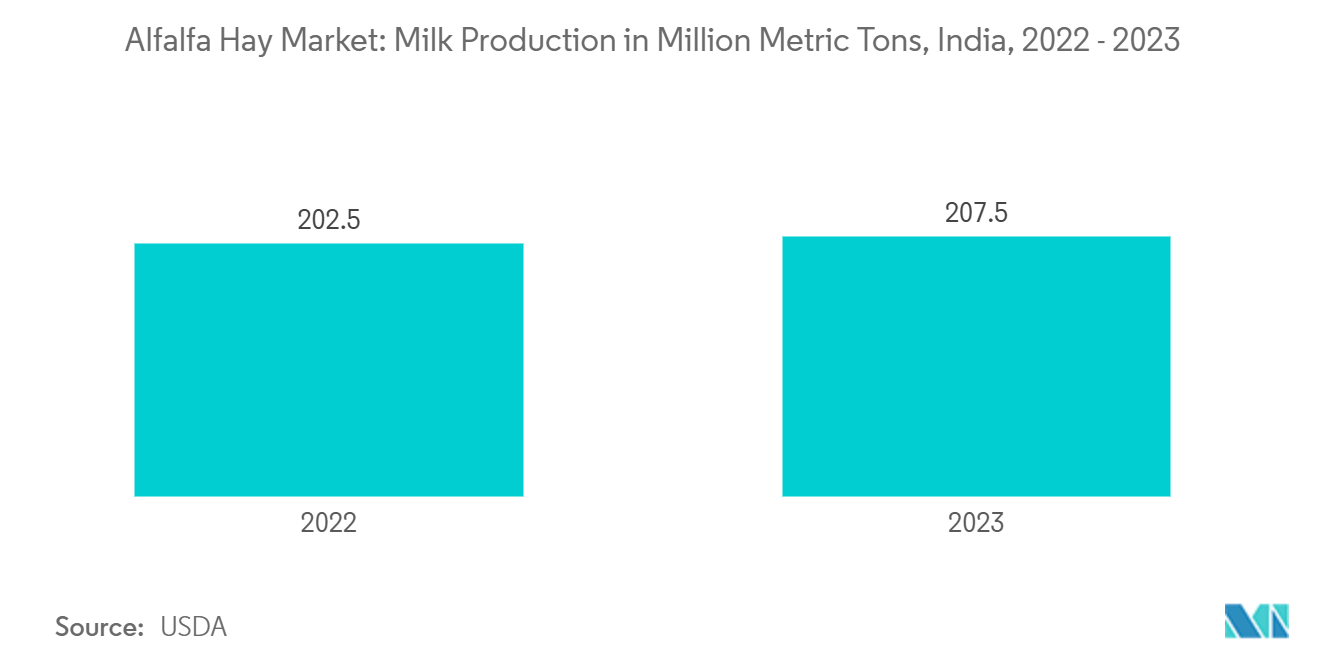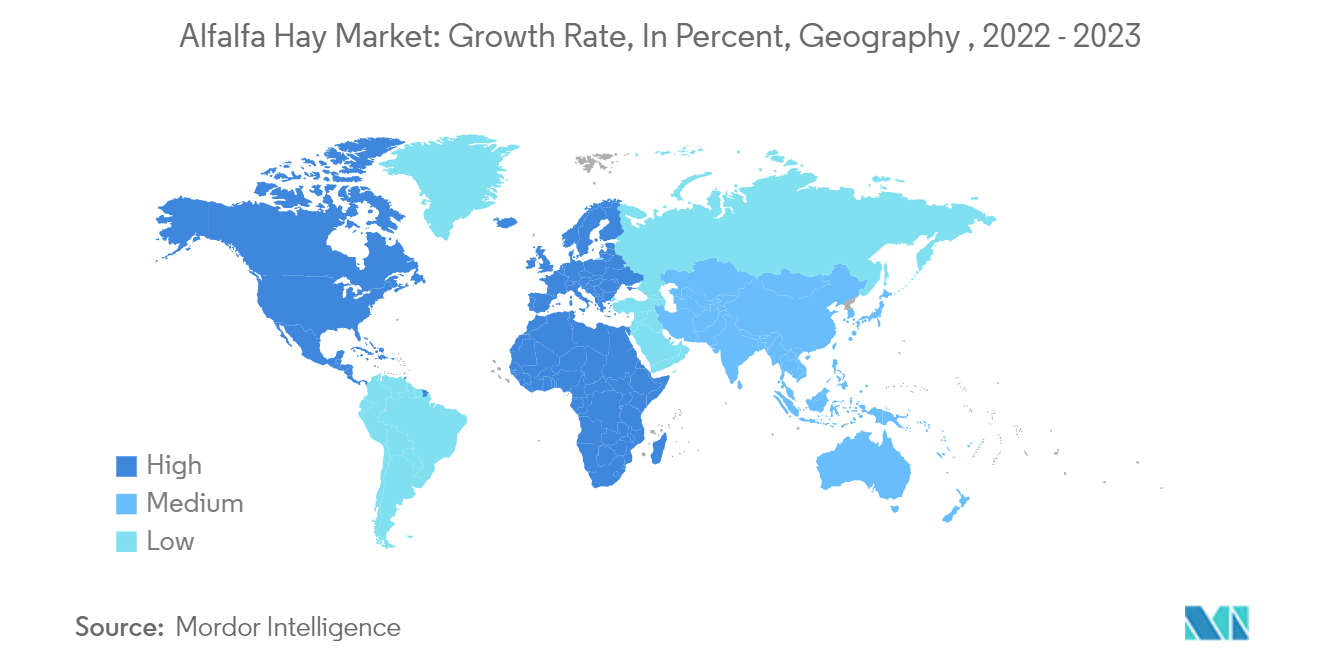Market Trends of Alfalfa Hay Industry
Increasing Demand for Dairy and Meat Products
- Livestock significantly propels the growth of the alfalfa hay market. According to the FAO, by 2030, meat and milk production in developing countries is set to rise annually by 2.4% and 2.5%, respectively. As a result, these nations are projected to contribute 66.0% of the global meat output, amounting to 247.0 million metric tons, and 55.0% of milk production, totaling 484.0 million metric tons. Furthermore, the livestock sector is under increasing pressure to meet the surging demand for high-quality animal protein. The Press Information Bureau of India highlights the country's position as the leading global milk producer, accounting for 24% of the world's milk output, supported by around 70 million small-scale producers. With a growing appetite for milk and its derivatives, USDA data reveals that India's fluid milk consumption jumped to 87.0 million metric tons in 2023, up from 77.0 million metric tons in 2018.
- The increasing reliance on alfalfa hay for animal feed is set to propel the market further. China's demand for alfalfa hay is on the rise, influenced by shifts in its dairy practices. Modern dairy farmers, with a growing cattle count, are leaning towards imported hay and commercial feeds. For instance, the World Organization for Animal Health reported China's cattle population at 84.5 million heads in 2023. In light of this escalating demand, the Chinese government is emphasizing the boost of its domestic alfalfa hay production. With cattle numbers climbing and a growing preference for premium animal feed, the demand for alfalfa hay is poised for an upward trajectory in the coming years.

North America Dominates the Market
- As of 2023, USDA reports that Wisconsin, New York, Michigan, and Idaho lead the U.S. in alfalfa hay production, with outputs of 5.0, 3.1, 1.5, and 1.5 million metric tons, respectively. This dominance shapes the regional landscape. U.S. domestic consumption of dairy products is climbing, largely fueled by a boom in non-fluid dairy sales. Since 1975, per capita dairy consumption has risen by 22%. The International Dairy Foods Association notes that American per capita dairy consumption has consistently grown, with a 0.4% rise in 2022 compared to the previous five years. The dairy sector, especially with a focus on sustainable food production, is set for further expansion.
- In the U.S., alfalfa hay is the primary choice for dairy cattle. Major dairy-producing states, such as California, Wisconsin, New York, Idaho, and New Mexico, consume two-thirds of their total alfalfa intake for dairy needs, according to USDA. While dairy markets primarily drive alfalfa hay consumption, beef producers also utilize it for forage, depending on availability and pricing. With domestic and export demand for alfalfa on the rise, the market anticipates significant growth during the forecast period.


